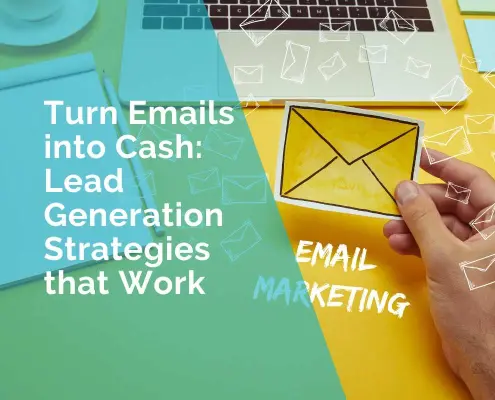Is Email Marketing Still An Effective Strategy?
When it comes to online marketing, contacting your customers through email is probably one of the oldest techniques still being employed today. However, with all of the advancements in technology and the way shopping is being done online, we must wonder if email marketing is still an effective strategy.
There is definitely some merit to marketing your business via email; however, every business needs to evaluate which marketing approach best suits their specific needs. To help you make the best decision for your company, we will be looking at the pros and cons of email marketing.
The pros of email marketing which make it an effective strategy
1. Email marketing is affordable
In light of more and more companies adopting a sustainable business plan, if your company has a pamphlet or a newsletter – you can go fully digital and distribute it as a pdf. Besides being good for the environment, digital newsletters are also much more affordable than traditional snail mail. Although your marketing can take place on many different platforms, you will still need to find a way to distribute files to your users.
Enter email marketing, through which you can send multiple files or download links to customers and subscribers. If you are looking for an affordable way to grow your business and stay in touch with your customers, email marketing is definitely the way to go. The costs associated with email marketing are low since there are no advertising fees. Since you aren’t printing or hosting files, you will also be saving money on that front.
If you have in-house copywriters, you can have them write the emails and develop an email marketing strategy internally. Doing most of the work by yourself will further reduce the cost of advertising through emails. If you want to invest in email marketing, you can purchase a CMS software suite that can help you send out thousands of emails.
2. Emails integrate well with other forms of marketing
Certain digital platforms are naturally better suited for specific types of ads. While that can be seen as a strength, there are also some associated downsides that come with focusing only on one platform for all of your marketing. You won’t use Instagram for a large number of download links, nor can your customers browse your products on YouTube. This will force you to diversify your marketing and choose the best platform for a specific marketing strategy.
A significant upside of email marketing is that it can be a great supplement to whichever type of advertising you decide to go with. You can always ask for an email subscription, regardless of which platform you run your ads on. Although, you should keep in mind that most forms of marketing will revolve around your website. You need to have a clean website design with a strong landing page if you want to have a high conversions rate.
3. You can automate email marketing
You could argue that many processes within your company can be automated. However, automating email marketing probably brings the most benefits and saves the most considerable amount of time. Writing thousands of emails by hand seems impossible. So does keeping track of all the clients you need to get back to.
We need to point out that you can also use automation to personalize your marketing. You can rely on software to gather customer information and segment your customers into groups, allowing you to cater to your customers’ needs. This will humanize your marketing while simultaneously saving you plenty of time, which you can use directly to communicate with high-value leads.
4. Market only to those who are interested
You need to ensure that any investment your company makes has a good ROI. It’s hard to know how effective most forms of marketing will be since you can only hope that the audience will respond to your proposition. On the other hand, email marketing is permission-based, and you will only be sending messages to those users who have expressed an interest in your business. Going by effectiveness per dollar when trying to determine if email marketing is still an effective strategy, it turns out to be one of the most cost-effective approaches. This is because you are focusing your efforts and only marketing to those who are already interested in what you have to offer.
You can have website visitors who are interested in your products fill out a form on your website. By having users subscribe to your email messages and notifications, you will be building up a list of leads. However, this doesn’t mean that you should automatically equate subscribers to paying customers. Well-written emails can help you achieve great results, but you will still need to put in the effort to guide your customers through the sales funnel.
Remember that building a list of subscribers takes a lot of time and effort. Getting people interested enough so that they subscribe can be helped along by other forms of marketing. However, no one is going to subscribe only to receive your ads. You need to offer your subscribers valuable content and only use advertising sparingly. If you want to implement content marketing, you need to avoid the mistake of making it overly promotional. When sending out emails, first ask yourself: will my users genuinely be excited to receive this message? If you are unsure about the answer, you might want to go back to the drawing board.
5. Email marketing is measurable
When marketing on social media or any other platform which you don’t own, it can sometimes be hard to accurately analyze how well your campaign is doing. Most platforms will give you access to insights and metrics, but they can often be obfuscated and hard to interpret. Sometimes, the numbers can also be artificially inflated to give you a false impression that your campaign is performing better than it actually is. Unfortunately, at the end of the day, you will be left wondering why your bottom line isn’t reflecting all of that success.
Fortunately, when it comes to email marketing, all of the parameters of the marketing are yours to control. This makes evaluating the success rate much simpler. What’s best is that you can use this to your advantage by turning your email marketing into the perfect testing ground for your marketing ideas. You can test which strategies get a better response from your audience and then adjust your marketing strategy to maximize the approach with the best results. Experiment with different subject lines, calls to action that you plan to use on your website, or marketing images. Even simple A/B testing will ensure that the version you decide to use for your large-scale marketing is the most effective choice.
The cons of email marketing
1. Emails aren’t suited for content marketing
Over the last several years, the world of marketing has been set ablaze by a new buzzword – content marketing. Although it’s not a new concept, what really propelled content marketing was the dominance of social media platforms as the most important places to advertise on.
Realistically, you can host and distribute your content in many ways, but posting content on social media will get it in front of the largest audience.
At the end of the day, that’s what marketing is really about – getting your message across. You could put links to your content in emails and send it out that way. However, that’s not nearly as exciting to users as seeing images or videos on social networks, which naturally leads us to our next point.
2. Emails generate less interest than other forms of marketing
Everyone has a friend whose inbox is full of unopened emails. Honestly, many people rarely open promotional emails. Even if you put interesting images in your email, they still require the user to open the message to see the files you have inserted. Additionally, some people use email software and only skim through the text.
You can try to combat these issues by getting creative with your subject lines. Unfortunately, that will only get you so far. And if you get overly creative or quirky, your emails may even get flagged as spam. If that happens and your messages go to the spam folder, most users will never see them.
3. Emails have file size limitations
Using email marketing for only text-based messages will make them seem even more dull and unappealing. Some of the best marketing emails include attention-grabbing images. However, including images (or any sort of file) in your emails comes with many limitations. File size limitations can make including multiple photos, or even single high-resolution images, practically impossible.
Sadly, that’s not the only issue with including images in your emails. You will also have a hard time making your emails scale well to fit different screen sizes. It’s much easier to make a website mobile-friendly than an email message. This problem is exacerbated further by the prevalence of smartwatches with email capabilities. It will practically be impossible to make your emails scale well on those tiny screens, and some models only display the textual parts of the email.
In conclusion
The answer to the question of whether email marketing is still an effective strategy highly depends on the specific marketing needs of your company. Due to the low associated costs and the overall effectiveness per invested dollar, we believe that email marketing still has a place in modern marketing strategies. Emails shouldn’t be your only form of marketing, but they work well when used to support other forms of marketing. The importance of email marketing for any business that relies on user subscriptions can’t be understated, which leads us to believe that email marketing will be around for a long time.











